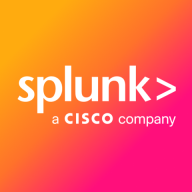

Splunk AppDynamics and Catchpoint compete in the application and network monitoring category. Splunk AppDynamics seems to have the upper hand due to its extensive feature set and flexibility across cloud environments, despite its high cost.
Features: Splunk AppDynamics provides extensive features, including detailed code-level tracing, JVM monitoring, and application flow maps. It supports multiple languages and environments, enhancing application performance and troubleshooting. Catchpoint specializes in synthetic and global monitoring, essential for assessing system availability from an end-user perspective, including in-depth reliability tracking and client-side session monitoring.
Room for Improvement: Splunk AppDynamics could improve by simplifying agent management, enhancing integration with cloud platforms, and expanding network monitoring capabilities. Users desire more intuitive dashboards and easier licensing procedures. Catchpoint could reduce manual custom setup efforts, improve script management tools, and efficiently handle large datasets while expanding geographic reach.
Ease of Deployment and Customer Service: Splunk AppDynamics offers flexible deployment options across public, private, and hybrid clouds, although the initial setup can be challenging. It is supported by responsive technical support. Catchpoint emphasizes easier public cloud deployments with limited flexibility but provides outstanding customer service, achieving quick issue resolutions.
Pricing and ROI: Splunk AppDynamics targets large enterprises with its high licensing costs, balanced by a strong ROI from comprehensive operational insights. Its pricing justifies the extensive features and reduced resolution times. Catchpoint's point-based pricing can be cost-effective with strategic planning, albeit considered high compared to competitors. It mainly appeals to enterprises with large budgets due to the realized efficiencies and time savings.
| Product | Market Share (%) |
|---|---|
| Splunk AppDynamics | 4.1% |
| Catchpoint | 0.6% |
| Other | 95.3% |


| Company Size | Count |
|---|---|
| Small Business | 5 |
| Midsize Enterprise | 1 |
| Large Enterprise | 8 |
| Company Size | Count |
|---|---|
| Small Business | 55 |
| Midsize Enterprise | 36 |
| Large Enterprise | 189 |
Catchpoint is the Internet Resilience Company™. The top online retailers, Global2000, CDNs, cloud service providers, and xSPs in the world rely on Catchpoint to increase their resilience by catching any issues in the Internet Stack before they impact their business. Catchpoint’s Internet Performance Monitoring (IPM) suite offers synthetics, RUM, performance optimization, high fidelity data and flexible visualizations with advanced analytics. It leverages thousands of global vantage points (including inside wireless networks, BGP, backbone, last mile, endpoint, enterprise, ISPs, and more) to provide unparalleled observability into anything that impacts your customers, workforce, networks, website performance, applications, and APIs.
Learn more at: https://www.catchpoint.com/
Splunk AppDynamics enhances application performance monitoring with advanced diagnostics and real-time insights, offering seamless end-to-end transaction tracking and infrastructure visibility.
AppDynamics provides critical tools for businesses to analyze application behavior and performance. Through innovative features like transaction snapshot analysis and adaptable dashboards, users can quickly identify and address issues, ensuring high levels of system uptime and efficiency. It is designed to support complex environments including Kubernetes and AWS, enhancing user experience by detecting performance issues early. Despite needing improvements in network monitoring and integration, it remains a robust option for tracking application health.
What are the key features of AppDynamics?In industries like financial services and e-commerce, AppDynamics facilitates performance tracking across distributed systems, optimizing infrastructure to meet consumer demands. It excels in environments needing precise transaction monitoring and is pivotal in delivering high value and satisfaction.
We monitor all Application Performance Monitoring (APM) and Observability reviews to prevent fraudulent reviews and keep review quality high. We do not post reviews by company employees or direct competitors. We validate each review for authenticity via cross-reference with LinkedIn, and personal follow-up with the reviewer when necessary.